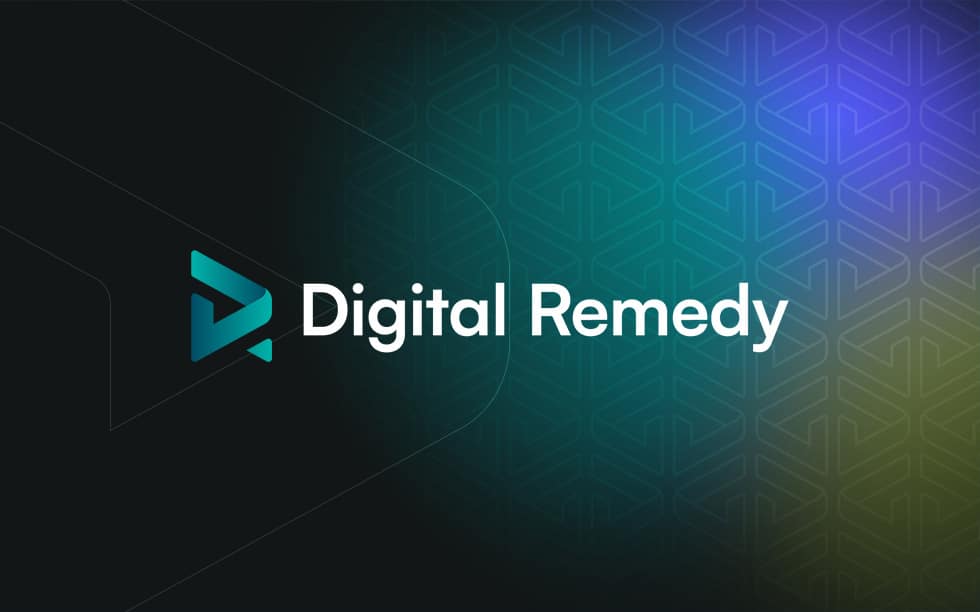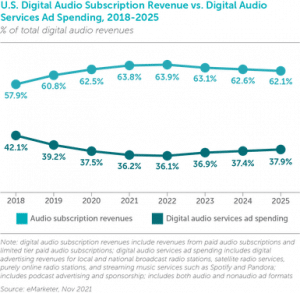Jan 31, 2022
The Rise of Digital Audio Digital audio has become an influential part of the modern marketing mix—allowing advertisers to reinforce their brand’s personality and connect with valuable audiences when they’re not in front of the big screen. Combining the best of digital and radio, streaming audio provides innovative ways for advertisers to deliver messaging to…

Digital audio has become an influential part of the modern marketing mix—allowing advertisers to reinforce their brand’s personality and connect with valuable audiences when they’re not in front of the big screen. Combining the best of digital and radio, streaming audio provides innovative ways for advertisers to deliver messaging to engaged listeners, create immersive, personalized listening experiences, and gain valuable insights. With digital audio, advertisers have the means to reach consumers when they are in the right mindset, with contextually relevant messaging that fuels a strong, mutually-beneficial connection.
The last decade has seen an explosion of digital audio content, a category that includes music services, internet radio, and podcasts. A rise in digital device ownership, combined with increased consumer demand for this type of entertainment content, has fueled the increase in digital audio consumption we’re witnessing today. After several years of growth, the share of U.S. digital audio subscription revenues will peak at 63.9% this year.1 After experiencing a decline from 2018-2021, digital audio ad spending share is expected to grow over the next few years, reaching 37.9% of total digital audio revenues in 2025.

The number of digital audio listeners in the U.S. has been steadily increasing over the past few years. In 2022, it is estimated that there will be 221.5m digital audio listeners in the U.S. (making up 65.7% of the population). Digital audio is driven by intentional listening, giving listeners the control to listen to what they want, when they want, how they want—even when screens are not in use. Through the combination of device, time of day, and content choice, advertisers can purposefully target ‘life’s moments and connect with consumers in an emotional and contextually relevant way with digital audio ads. With the average consumer increasing time spent listening to audio, it presents a significant opportunity for advertisers to reach and resonate with engaged listeners who are likely to be more receptive and responsive to messaging delivered in this powerful, immersive ad environment. In fact, nearly half of streaming audio listeners say audio ads are less disruptive than other forms of advertising, and thanks to streaming audio’s ability to be highly personalized and dynamic, 43% say the audio ads are more relevant to them.2
Podcasts are playing a huge role in the rise of digital audio advertising. Podcast ad spend is expected to exceed $1.71b this year, increasing to $2.15b in 2023,3 and will reach $2.71b by 2025. In 2022, the number of U.S. podcast listeners will reach 125m and will account for 56.4% of U.S. digital audio listeners. As of 2021, there are over 2m podcasts and more than 48m podcast episodes.4
Time spent listening to podcasts has been slowly increasing since 2019 and will continue to increase through 2023. This year, the average adult podcast listener will spend 52 minutes per day listening to podcasts. In 2023, that will increase to 56 minutes, just below an entire hour per day. Between the increased interest in podcasts and the rise in time spent listening to them, advertisers have the perfect opportunity to target relevant consumers based on specific topics that interest them.

Earlier this year, Spotify released a new feature that makes podcast ads even more appealing to brands. The new feature, which Spotify calls “A call-to-action (CTA) card” provides the listener with a small, interactive button near the middle of their device’s screen while an ad is playing, which they can click to be redirected to an advertiser’s website landing page. This new feature also helps consumers remember URLs and discount codes that otherwise may have gone through one ear and out the other.
Measuring the Effectiveness of Digital Audio Ads
Digital audio ads offer the access, agility, flexibility, and precision that advertisers are increasingly seeking in today’s competitive and complex ad space. Not only does this medium present new opportunities for brands to promote their products and services, but because it can be targeted and tracked, it also creates new avenues to measure the effectiveness of audio ad campaigns. Basic digital audio ad metrics include:
• Impressions – Total number of ads served.
• Reach – Number of unique people who heard your ads.
• Frequency – Average number of times each person heard your ads.
• Listen-Through-Rate (LTR)/Completion Rate – Percentage of ads served that were played to the end.
These metrics give advertisers a balance of big-picture assessments and real-time reporting with granular, impression-level data. Armed with this info, not only can advertisers capture the attention of their target audiences, they also can engage and develop new ones.
Programmatic audio uses technology to automate the process of buying audio ads across digital radio, podcasts, and music streaming services. Programmatic streamlines the ad-buying workflow by strategically delivering ads to users in real-time based on their behavior, without direct interaction from a brand’s marketing department or the audio publisher selling ad space. When integrated into a larger campaign, programmatic audio can create a cohesive and personalized advertising experience that is more likely to result in conversions.
Advantages of Programmatic Audio Advertising:
With audience targeting similar to other programmatic channels and more sophisticated ad inventory, it’s now possible to buy and sell audio ads programmatically. This means that the selling and insertion of ads into audio content is now automated, similar to programmatic display advertising, enabling advertisers to buy targeted ads from all major audio publishers on a single system.
By serving ads at just the right time, there’s an opportunity to deepen the relationship with the listener and boost brand awareness and consideration. It’s not just personalized music or podcasts that listeners crave, they also want a personalized ad experience, which keeps your brand top-of-mind. Here are some tips for developing an effective digital audio campaign:
Unfortunately, as new types of advertising opportunities are introduced, scammers are usually not far behind with new kinds of ad fraud to exploit vulnerabilities in the media buying process. Check out our recent Trends report to learn how to protect your brand against the growing threat of ad fraud in the digital audio space.
Whether you’re looking to get started with digital audio advertising or want to upgrade your digital audio strategy, Digital Remedy offers a comprehensive solution—comprised of top-tier inventory across a fleet of audio-centric publishers and services and the ability to connect with millions of active listeners across multiple devices and formats—to ensure your ads are delivering the greatest impact and driving desired results.
Thanks to our partnership with leading streaming services, such as Spotify and Pandora, brands can reach users listening to music aligned with popular daily activities, life moments, moods, and seasonal events. Digital Remedy provides a multitude of unique segments and data attributes for audience targeting, including but not limited to:

Leveraging our innovative technology, campaign performance can be optimized in real time based on your brand’s specific KPIs and campaign goals, such as:
• Consumer Reach & Engagement • Ad Deliverability & Viewability • Return on Ad Spend
Additionally, we’re able to leverage our proprietary attribution system through our Flip platform to track consumers who heard your audio ad and ultimately converted, including site visits and purchases, app downloads, and store visits. Digital Remedy provides the unmatched access, precise targeting capabilities, full transparency, real-time optimization, and seamless attribution reporting needed to achieve your campaign performance goals with a strategic, omnichannel approach.
Interested in learning more about how programmatic audio or podcast advertising can help grow your brand? Speak with a member of our team today.
Source:
1. eMarketer, 12/06/21 “Digital audio market sees inflection as advertising grows in share”
3. eMarketer, October 2021, Podcast Ad Spending
4. Podcast Insights, 12/28/21, “2021 Podcast Stats & Facts (New Research From Apr 2021)”
Related Posts

In the constantly evolving digital advertising landscape, agility and flexibility are paramount. As agencies and advertisers look to maximize.

When COVID-19 upended the world in early 2020, the ripple effects were swift and far-reaching across every industry, and.

As artificial intelligence continues to dominate headlines and industry conversations, confusion still lingers—especially around the relationship between artificial intelligence.